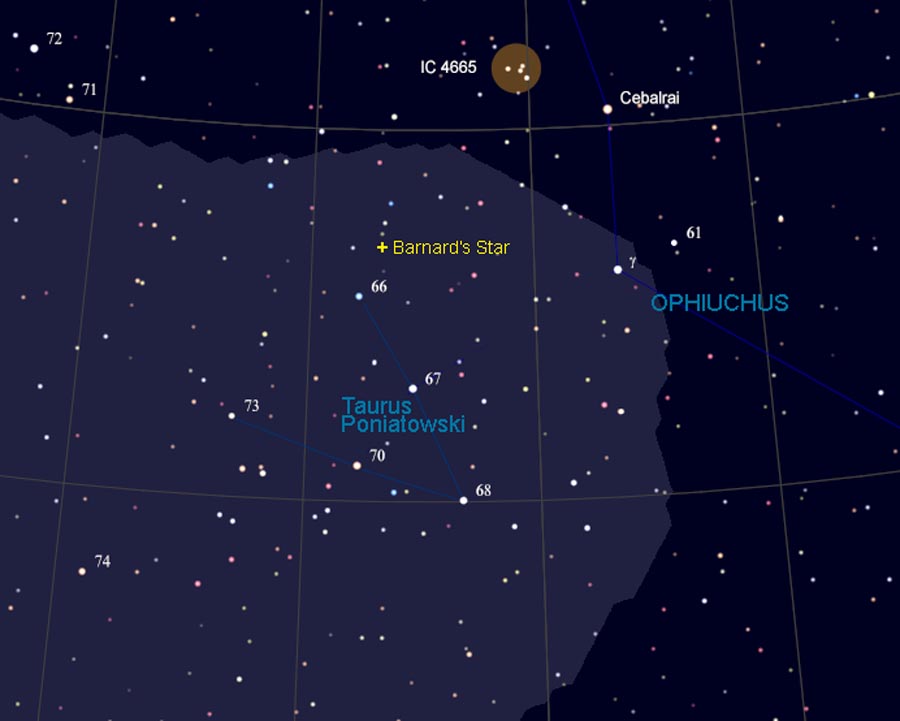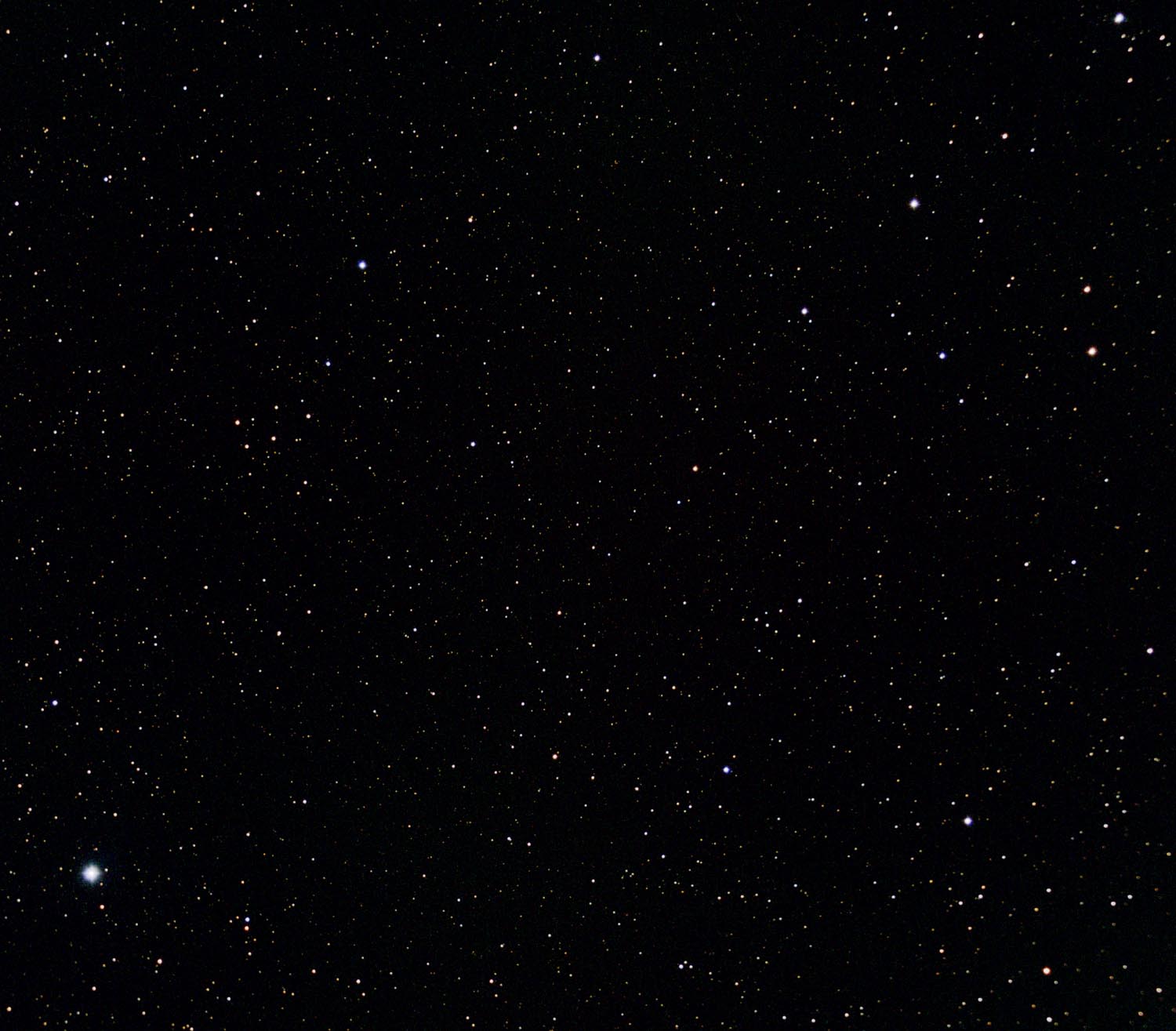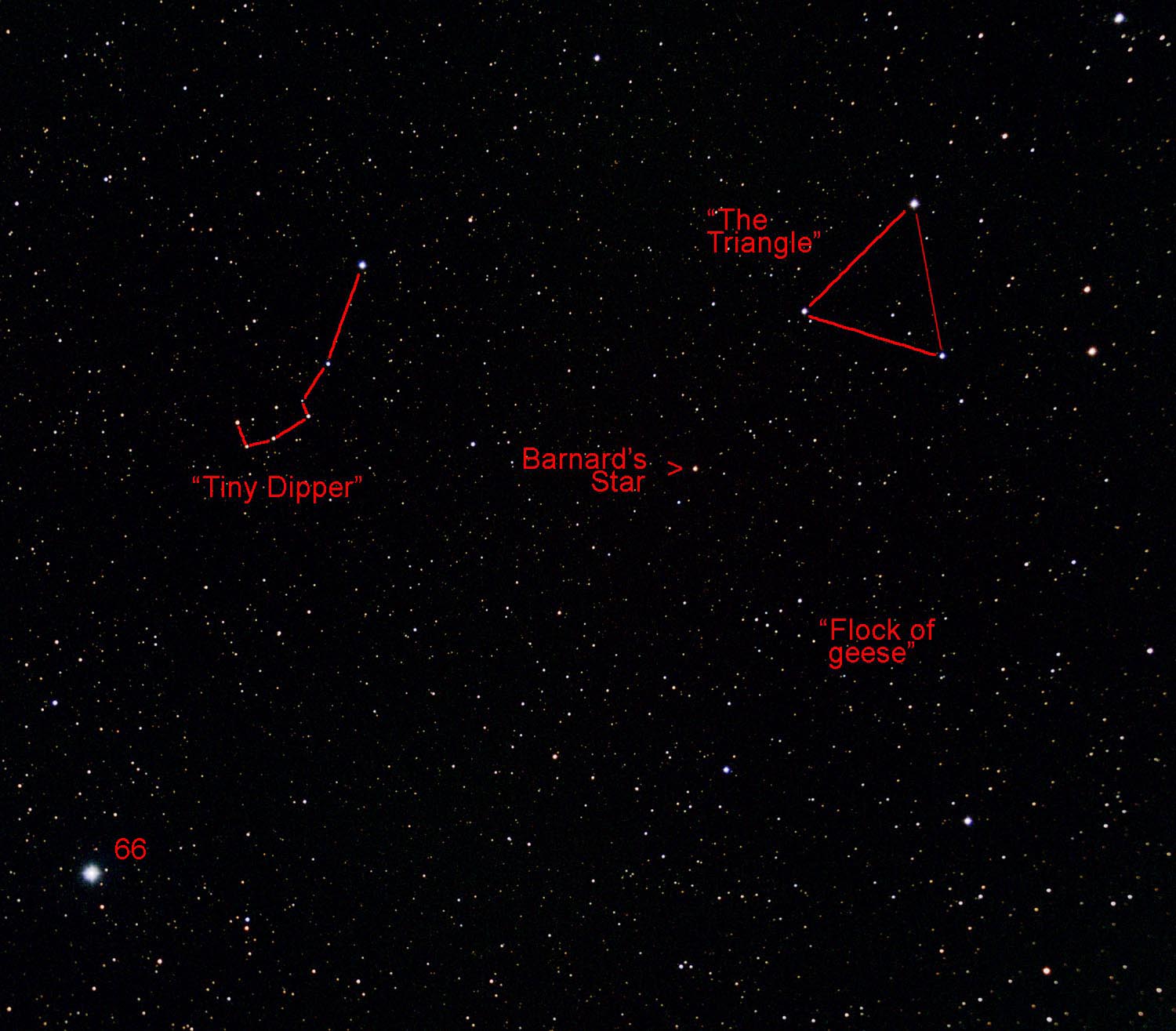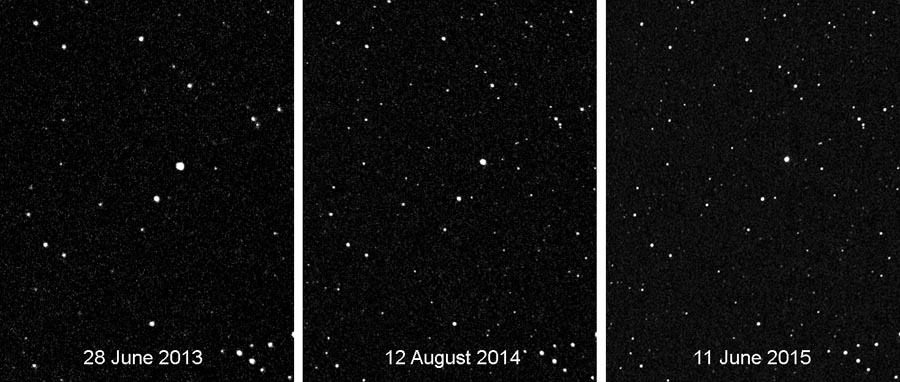
 | SOCO Blog |
24 June 2015
NOT-SO-FIXED STAR
When I go out at night and look at a group of stars like the Big Dipper, I know that it looks the same as when I viewed it as a kid, and it will look the same on the day I die. To the ancient astronomers, there were two types of "stars" in the sky— the "fixed" stars, and the stars that moved. The moving stars turned out to be the planets. Of course, we know that the regular stars are also moving. In fact, they're moving quite fast— our Sun is moving through space at around 12 miles per second in the direction of the constellation Hercules. Other stars have comparable speeds. However, the stars are so far away that their changes in actual position are imperceptible to us over a lifetime.
That is, most stars. There are a handfull of stars that are moving so fast and are close enough to us that, over time, we can actually see them "move" across the sky. This movement is small, and you need a telescope to detect it, but their position in the sky can be observed to change over time. The best-known of such stars is Barnard's Star, first observed by the American astronomer E. E. Barnard. In 1916, he was able to detect its movement by comparing photographic plates made in 1888 and 1890 at the Harvard University Observatory. This was the first time that the movement of a star across the sky was actually observed.
Barnard's Star is a Class M red dwarf with around a tenth of the mass of our Sun. At a distance of only 6 LY, it is the fourth closest star to us, after the three stars that make up the Alpha Centauri triple system. Barnard's Star has an actual speed through space of around 89 miles per second relative to our Sun. Combining its actual speed, its direction of movement and its distance, this results in a "proper motion" of 10.3 arc-sec per year. The proper motion is the motion with which a star appears to move across the sky, measured in fraction of a degree. At this rate, it would take Barnard's Star around 350 years to travel one degree. In a person's lifetime (say, 72 years), Barnard's Star would move about 0.2 degree. This doesn't seem like much, but it is enough so that you can visually detect the movement of the star over a couple of years.
Barnard's Star has a visual magnitude of 9.5, which is too dim to be seen with the naked eye. As shown in the chart in Figure 1, it lies just off the right shoulder of Ophiuchus. It is near the obsolete constellation of Taurus Poniatowski ("Poniatowski's Bull"), a small V-shaped asterism named in 1777 by the Abbe Poczobut in honor of the King of Poland.

Figure 1. Star chart showing the location of Barnard's Star.
Source: Cartes du Ciel.
Figure 2 shows a recently acquired (June 11) image of the star field containing Barnard's Star. Barnard's Star is the reddish star near the center of the image. As you can see, visually there is not much special about this star. Through the telescope, it's hard to pick it out from the rest of the tiny stars in the area. To help in finding it, Figure 3 identifies several small asterisms around Barnard's Star that tend to show up in the telescope under reasonable magnification. The starting point for finding Barnard's Star is the naked-eye star 66 Ophiuchii, which sits at the top of the right branch of the "V" forming Taurus Poniatowski (see Figure 1). From there, look north-east to find three small asterisms. "The Triangle" is composed of fairly bright stars and is usually easy to pick out. The "Tiny Dipper" also is usually fairly easy to see, due to its unique shape. Finally, a small V-shaped group of stars that reminds me of a flock of geese may be visible below the other two groups. If you can find these asterisms, Barnard's Star will be near the center of the group.

Figure 2. Star field containing Barnard's Star (see Figure 3 for location), acquired on June 11, 2015.

Figure 3. Locator image for Barnard's Star .
Okay, so how about its movement? Figure 4 shows an identical section extracted from images acquired on three dates: 28 June 2013, 12 August 2014, and 11 June 2015. These are monochrome versions of the green band images, processed to emphasize the stars. Careful examination of the images shows that the white dot representing Barnard's Star does move slightly from one to the next. Note— differences in the sizes of the dots representing the stars from one image to another are the results of differences in focusing the imaging system. Prior to 2015, I was using the old manual Crayford focuser, which did not allow precise focusing as with the current Optec TCF-S3i focuser (see the Equipment Page).

Figure 4. Detail in images from three years showing the movement of Barnard's Star.
A better impression of the movement of Barnard's Star can be gained from Figure 5, which shows an animation of the images from Figure 4. This clearly shows the movement of the star between the observation dates. Ignore the changes in the size of the dot representing the star in the animation— this is the result of the differences in focus described previously (I know, it looks like the star is moving away from us in the animation— actually, Barnard's Star is moving toward us).

Figure 5. Animation of the images from Figure 4 showing the movement of Barnard's Star from 2013 to 2015.
Barnard's Star will continue to scoot across the sky, forcing star chart makers to constantly revise their products to keep up with it. I plan on keeping up my annual imaging of it, so the animation gets better and better as additional years are added. Unfortunately, while Barnard's Star is not going to stop, some day I will. Here's hoping for a long animation!
 Return to SOCO Blog Page
Return to SOCO Blog Page
 Return to SOCO Main Page
Return to SOCO Main Page
Questions or comments? Email SOCO@cat-star.org